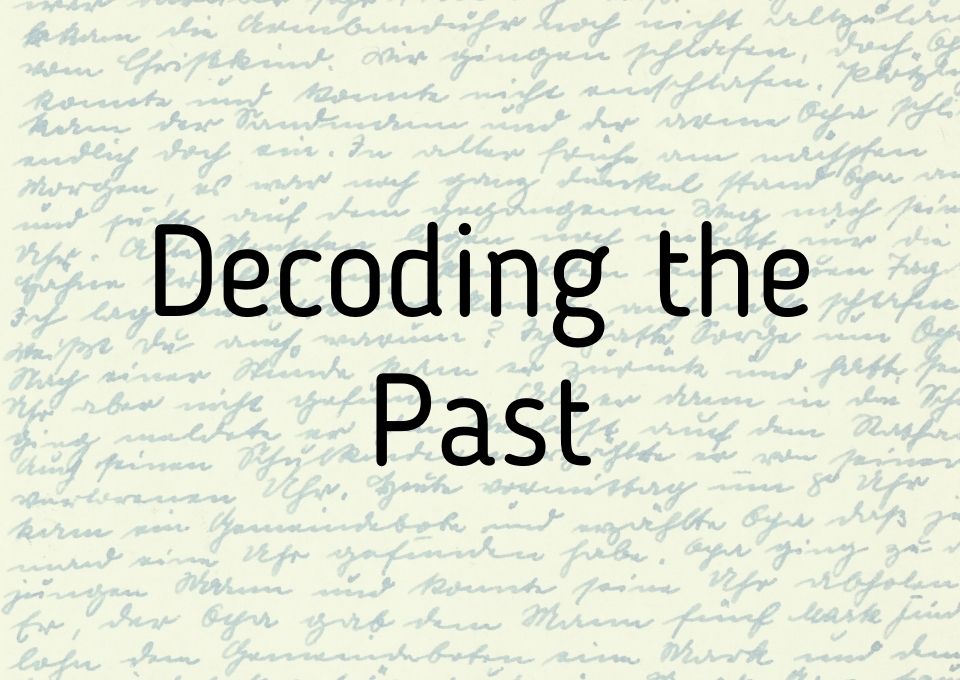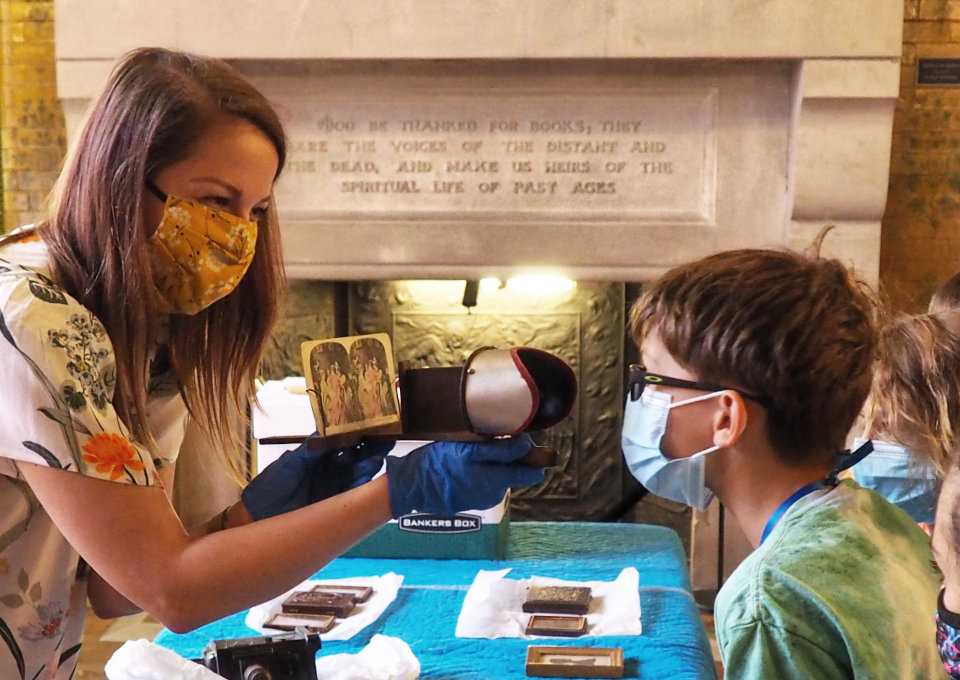Decoding the Past


Lesson Overview
Best for 4th – 8th Grades
Much of the work that historians do resembles the work of detectives. Historians draw on a variety of primary sources, both documents and artifacts, from the time periods that they study in order to understand the ways in which people lived, the tools they used in their daily lives, the choices they made about their work and their families, and the challenges they faced.
In this program, students will have the opportunity to experience the work of “history detectives” by interacting with the Museum’s collection of historical artifacts from the 18th and 19th centuries. Students will examine Early American documents and artifacts, then explore the museum’s collection to further “decode” life in the 19th century.
Program Objectives
Students will:
- Learn how to examine an object to find clues as to its design and purpose.
- Explore how changes in the tools of everyday life reflect changes in society and its technology.
- Speculate what future generations will think about the objects we currently use in our daily lives.
Standards & Skills
6.1.4.C.17: Determine the role of science and technology in the transition from an agricultural society to an industrial society, and then to the information age.
Chronological Thinking | Critical Thinking | Presentation Skills
The Lesson Plan
The full lesson plan including images and activities for students can be found below on this web page.
Part 1: Learning about the past from objects & documents
Ask students how we learn about people in the past and discuss
- Primary sources (letters, journals, newspapers, ledgers, etc.)
- Artifacts (things people owned, used, etc.)
- Buildings
- Art
Have students look at the Hugh Nesbitt Inventory. This is part of an inventory taken of Hugh Nesbitt’s belongings after he died.
Discuss what an “inventory” is in general terms and how that applies here.
Discuss all items on the inventory to make sure they know what everything is.
Note the column with the value of each item. Emphasize to students that they should look at these in relative terms (ie: comparing different items on the list) not in terms of what that money would mean today.
Give students the Analyzing Nesbitt Inventory Document.
Explain that they should pick 5 objects from this list and write these in the left-hand column. Then, in the right-hand column they should write something this object tells us about the person who owned it.
For comparison, refer back to the pre-lesson activity for which they listed some of the objects they own.
Example #1: Clock and Case worth $20. This is the most expensive household item listed, worth almost as much as the other household items listed.
Example #2: Bible and other books worth $5. This tells us that he was literate. It also shows us that books are a relatively high value item (worth about half of what the bed/bedding/bedstead are worth). In 2020 it would take a lot of books to be worth half of the value of even an inexpensive bed.
Example #3: 3,000 sheaves of rye. This tells us he was a farmer and that he had enough land to grow that much rye (in addition to his other crops).
Have students share some of their answers. Draw some larger conclusions about Mr. Nesbitt based on these. For example:
- He was likely a wealthy farmer
- He had both substantial land for crops and land for livestock as well
- He had a nice house that included a sitting room and a parlor
- He had the time and inclination to enjoy books and art
Discuss the limitations of written primary sources
- Bias: Primary documents reflect the views of the person or people who created it and therefore may not be accurate or complete. Any primary document must be used with an understanding of the bias of the person who wrote it.
- Not everyone was literate, so written documentation favors those who were
- Not everyone who was literate left behind documents, so written documents favor those with the means and time to write a lot and/or have sufficient economic activity to leave behind more documentation
- Written documents don’t always survive, so what we are left with is a (random) sampling of all the documents actually written
- Ultimately written sources favor those with money, power, status, etc.
These limitations are why objects are so important to help fill out the stories of ordinary people.
Explain that students will be put in groups to looks at an object from the 19th century. With their group (or individually if necessary) they will use the Artifact Analysis Sheet to:
- Examine the object objectively to give a good physical description of it, including material, moving parts, etc.
- Try to figure out how the object may have been used and who might have used it
- Make some inferences about the people who used/owned this object and the society in which they lived
Assign an object to each group and give them the Artifact Analysis Sheet.
Please refer to the Decoding the Past Artifact Information for the correct information on each of the objects. You can work with the students and ask them questions to help them along, but be sure to let the students draw their own conclusions (even if totally incorrect) and to not give them the “answer.”
Have the students present their findings to the class and discuss whether or not their findings were accurate. Even if their ideas are far off base, the exercise is still important in having them look closely and make an educated guess about the object. The point of the activity is not to be right or wrong, but to use their critical thinking skills to analyze an object.
Part 2: Become a 19th Century Tradeperson
Assign each student to one of the trades below. They will look through the information, tools and other photos in their section in order to familiarize themselves with that trade, and to imagine what it would be like to do that trade.
They will then take on the role of this 19th century person and write a diary entry on the corresponding sheet (included in each section) as if they were that person, focusing on the tools they used, and what an average day might have been like for them
Encourage creative thinking for this project. Some helpful prompts:
- Do you like your job? If yes, what do you like. If no, why not and what would you rather be doing?
- Are you working with other people or on your own?
- Are you working on a specific project for a client (ie: Mr. Smith ordered a table and chairs….) or are you making something to be available for people to buy from your shop?
- What tool do you think is the most interesting, important, unusual, etc.?
Each student should write their own journal entry, but they can work together with the other members of their trade in doing so (For example: They could write about working together on a project, or about an interaction they had)
At the end, go through each trade and have the corresponding students briefly present that trade, some of its tools and what they wrote about.













